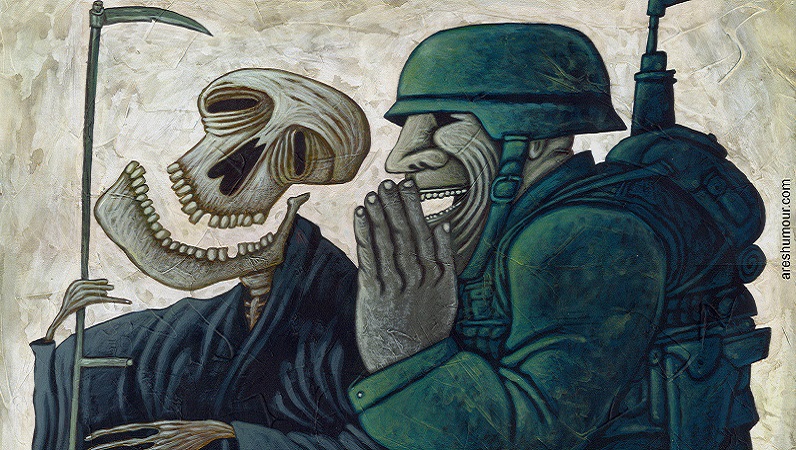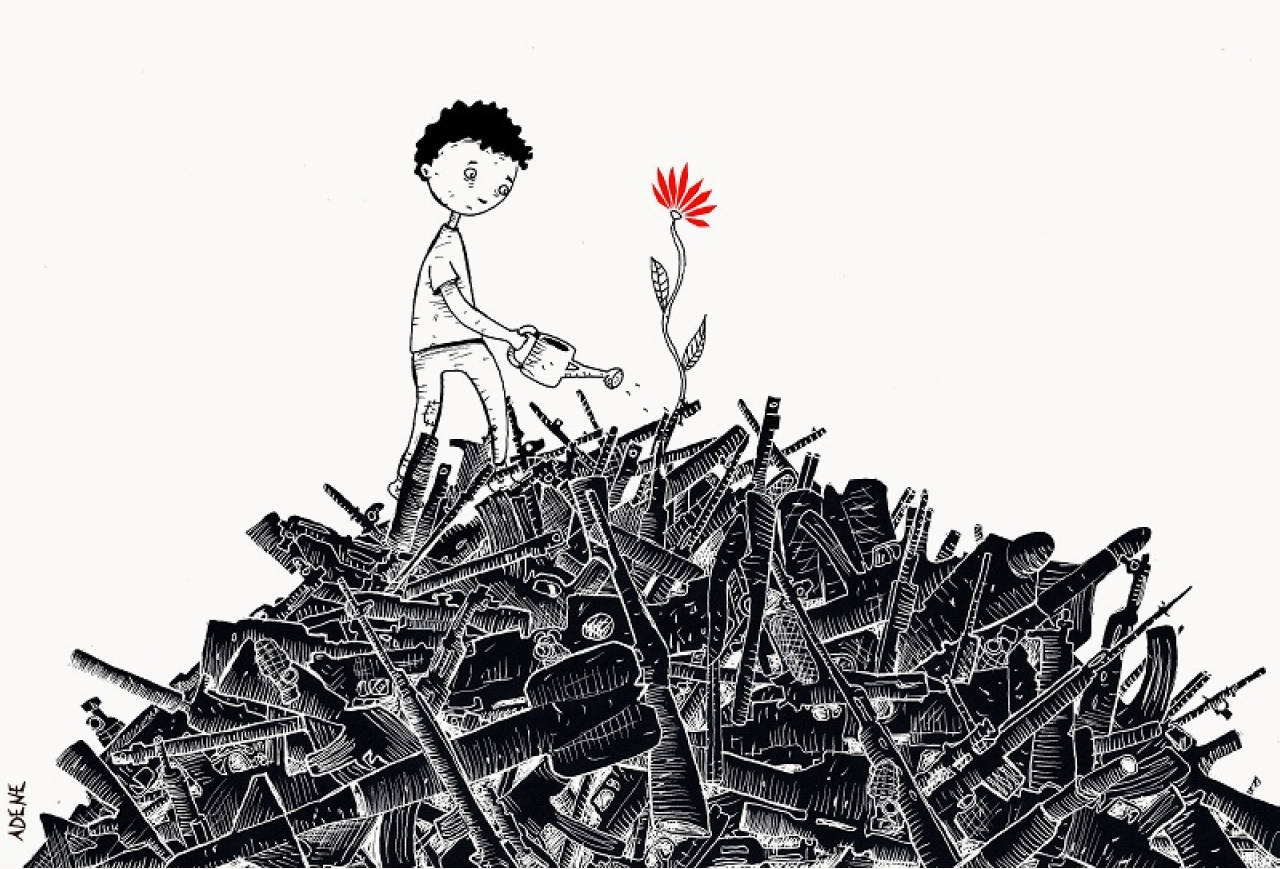When talking about the global arms trade, focusing on the Middle East seems not only relevant but even natural given that an increasing share of importers of major arms are to be found in this region, which is the second most important one in the world in this regard – after Asia and Oceania, with which the gap is rapidly closing.
Within the Middle East, the Arabian Peninsula is home to three of the five most important arms importers – namely the Kingdom of Saudi Arabia (KSA), the United Arab Emirates (UAE), and Qatar. From this, it stems that analyzing the politics and economics of arms trade in those countries is particularly appropriate and necessary (1).
Now, while numerous works on the politics and economics of the global arms trade have included Middle Eastern or Gulf case studies, they tend to aim at deciphering the trends and implications of arms deals from the perspective of the exporters – looking mostly at the use of such military exports as a tool of foreign policy (Pierre 1982). However, not only is a focus on the politics and economics of arms procurement in the Gulf interesting in itself, and for what it can bring to a comparative approach with importers in other regions of the world, for instance, but it also arguably allows one to shed light on new power dynamics which go far beyond the shores of the Arabian Peninsula. In this short note, I brush upon some of the main characteristics of the politics and economics of arms procurement in the Gulf region before linking them to the idea of increasing blurred lines between the political, economic and strategic dimensions of the global arms trade – which, in turn, leads to shifts in the relations between stakeholders amidst the triangle composed of arms client/importing states, supplier/exporting states, and defense industrial companies.
Politics and economics of arms procurement in the Arab Gulf States
In addition to the incentive to acquire relevant military equipment to defend their states, an important (and, for the longest time, the first) determinant driving arms procurement for Gulf leaders has been to secure some political support from the Western partners the industrial military complex of which they invested in massively and helped sustain through these contracts. By buying advanced weapons from the US, the UK and France, in particular, local regimes indeed make sure that world powers remain concerned with their security and stability – a quid-pro-quo dynamic which has been part of a broader and tacit “oil for security” pact, and was discussed in numerous works. Other political aspects of arms procurement in the Arabian Peninsula which have been less commented upon have to do with the internal security and stability it helps provide, be it directly or indirectly. It is indeed worth underlining that purchasing such an impressive military arsenal promotes national unity and encourages the population to stand behind their leaders both by stirring a sense of national pride and by instigating existential fear towards a real or hypothetical enemy (Soubrier 2016) – when it does not simply stands as an unspoken threat of repression which subtly dictates them to behave (Buzan & Herring 1998). Last, but not least, arms procurement has increasingly become part of distributive dynamics within the rentier states of the Gulf which have in essence allowed their leaders to ensure political stability and social quiescence. As part of their offsets strategy, the UAE led the way in terms of asking international defense companies to operate the contracts through joint ventures they ought to establish with a local partner as a 51% shareholder while they, as outsiders, retained 49%, for instance. Now, these assemblages participate in the core rentier distributive designs of the UAE and other countries of the Arabian Peninsula all the more evidently that many of these joint ventures employ very few locals, and end up being little more than a way for these majority shareholders to cash in on the sole fact that they are Gulf citizens. Of course, this might change over time, as a real effort has been put on training and on nationalization (“Emiratization”, “Saudization”, etc.) of the workforce in the private sector of all these Gulf countries. There is however also a possibility that arms trade in the Gulf keeps being used at least partly if not mainly as a tool towards other interrelated political and economic interests, which the lack of transparency in this field renders particularly easy. On a related note, it is important to point at other blurred lines increasingly involved in the arms trade in this region – and well beyond.
Politics, economics, and strategy: the increasing blurred lines of the global arms trade
As was just underlined, arms procurement in the Gulf serves many political purposes interlaced with regime stability incentives in addition to the multifaceted role these purchases play in these countries’ defense strategies. I would like to argue here that these blurred lines between the political, economic and strategic  dimensions of the arms trade are far from being a characteristic of this region, and that it has become increasingly difficult to clearly dissociate one from the other in what drives such trade on the other end of the spectrum, that is on the exporters’ side. Historically, arms sales have relied on a variety of motives which can be broken down into economic and political motives, the former including employment and the amortization of research and development costs, and the latter including alliance building as well as political leverage or influence (Harkavy 1994). While there have always been some interconnections between the political and economic dimensions of arms trade, these have increased to such a point that they are now hard to distinct from one another – for a number of reasons. One is the intensification of the role of the private sector in the global arms trade, along with what Laurance (1992) identifies as a “shift away from bilateral national negotiations and dealings to the arms bazaar approach” in addition to the fact that offsets are now a central part of arms deals (Neuman 1985). Another important issue is the dependence of defense industrial companies, and thus of the Defense Technological and Industrial Base of arms producing countries, on exports (Béraud-Sudreau & Meijer 2016), which has arguably increased tremendously. To be sure, the government of any country with a relatively small domestic arms market is inclined to promote exports to reduce unit costs through economies of scale (Krause 1992). Today, one can however witness a surge in the amount of political support arms exports receive along what is almost depicted as an “existential need” to export. As such, policies revolving around arms sales can be seen as no longer “merely” representing economic and/or political, but even strategic, stakes. This can be explained by two trends. The first one is the shrinking of Western defense budgets, which lead arms industrial companies to eagerly turn to the international markets as their national markets decreased relatively. The second one is the growing export race within the international arena which is associated with the combination of the aforementioned dynamic and of the emergence of new (or increasingly active) competing arms producers such as the BRICS. Now, this in turns leads to shifts in the relations between stakeholders amidst the triangle composed of arms client/importing states, supplier/exporting states, and defense industrial companies which are crucial to explore.
dimensions of the arms trade are far from being a characteristic of this region, and that it has become increasingly difficult to clearly dissociate one from the other in what drives such trade on the other end of the spectrum, that is on the exporters’ side. Historically, arms sales have relied on a variety of motives which can be broken down into economic and political motives, the former including employment and the amortization of research and development costs, and the latter including alliance building as well as political leverage or influence (Harkavy 1994). While there have always been some interconnections between the political and economic dimensions of arms trade, these have increased to such a point that they are now hard to distinct from one another – for a number of reasons. One is the intensification of the role of the private sector in the global arms trade, along with what Laurance (1992) identifies as a “shift away from bilateral national negotiations and dealings to the arms bazaar approach” in addition to the fact that offsets are now a central part of arms deals (Neuman 1985). Another important issue is the dependence of defense industrial companies, and thus of the Defense Technological and Industrial Base of arms producing countries, on exports (Béraud-Sudreau & Meijer 2016), which has arguably increased tremendously. To be sure, the government of any country with a relatively small domestic arms market is inclined to promote exports to reduce unit costs through economies of scale (Krause 1992). Today, one can however witness a surge in the amount of political support arms exports receive along what is almost depicted as an “existential need” to export. As such, policies revolving around arms sales can be seen as no longer “merely” representing economic and/or political, but even strategic, stakes. This can be explained by two trends. The first one is the shrinking of Western defense budgets, which lead arms industrial companies to eagerly turn to the international markets as their national markets decreased relatively. The second one is the growing export race within the international arena which is associated with the combination of the aforementioned dynamic and of the emergence of new (or increasingly active) competing arms producers such as the BRICS. Now, this in turns leads to shifts in the relations between stakeholders amidst the triangle composed of arms client/importing states, supplier/exporting states, and defense industrial companies which are crucial to explore.
Shifting relations amidst the client state – supplying state – industrial companies triangle
The Arabian Peninsula serves as a perfect case study to observe these shifts not only because it is such a significant arms-importing region but also because Gulf leaders, particularly in KSA, the UAE and Qatar, have always used arms procurement as an incremental tool in their strategy to secure their political stability. As they develop their armed forces, invest much more effort in training and in modernizing their defense, and increasingly project their militaries onto foreign theaters of operation, their procurement has become much more mission-oriented and coherent with identified capability needs. This is not to say that the arms trade in the Gulf has lost its (geo)political dimension however – and quite the opposite. Well aware of the incredible “magnet” they represent for defense manufacturers around the world and the national economies they contribute to, which is increasingly turning into a strategic issue, against the aforementioned background, the leaders of these oil monarchies seem keen on using this export race in their direction to their advantage. The most obvious and direct consequence of this is with regards to the relations between the client state and the industrial companies. While it used to be a relatively easy task to sell military equipment to these countries, which is not surprising given that the actual specificities of products mattered less than other unspoken criteria, all industrial companies working in and with them today are unanimous: it has become a great challenge to please these demanding client states. Perhaps more importantly, and by virtue of the blurred lines between all dimensions of arms sales for the exporting countries, we might also be witnessing a shift or perhaps even a reversal in the relations between the client states and the supplying states – along the lines of a “reverse influence” mentioned by Paul (1992) as the one a recipient develops over a supplier through an arms transfer relationship. The author explains that, during the Cold War, this phenomenon was particularly related to the U.S.-Soviet competition, which “increased the strategic leverage of states that could offer something tangible to the superpowers who, in turn, cultivated these relationships for the continuation of their structural conflict”. Today, it is possible to consider that the Arab monarchies of the Gulf are effectively nurturing a newfound strategic leverage onto all the states which are competing to export arms to them – that is virtually the whole world. Here, what is important to underline is that this leverage seems to not only affect what a given producing country is willing to sell to its Gulf partners, but possibly the foreign policy it is willing to implement in the region as well. This can in turn be linked to the last yet certainly not the least of all power shifts in the triangle which was previously discussed, that is the increasing political sway of defense industrial companies in their relations with the “supplying state”, that is the government of their home country.
***
Eventually, the argument here is neither to deny the economic and strategic interests which the arms trade with the countries of the Arabian Peninsula represent for major exporters, nor to discard the –increasing– importance of arms purchases in the implementation of autonomous security and defense strategies on the part of the Gulf states. Rather, this paper aims at raising awareness that while all this is very accurate, military contracts signed with Gulf partners also continue to play a crucial role in broader (geo)politics and multifaceted power dynamics – between stakeholders within these states, between arms suppliers and clients, and between political and economic actors within exporting countries. Understanding just how significantly this affects the traditional rules of the game and the political, economic, and strategic interests of all state and non-state actors involved appears to be a great case study to make sense of broader shifts of power and influence occurring in contemporary international relations, and a possible starting point for any intellectual and/or policymaker who would be interested in introducing changes in this path.
Bibliography
Béraud-Sudreau, L. & Meijer, H. (2016). Enjeux stratégiques et économiques des politiques d’exportation d’armement: Une comparaison franco-américaine. Revue internationale de politique comparée, Vol. 23 (1), 57-84.
Buzan, B. & Herring, E. (1998). The Arms Dynamic in World Politics. Boulder, Lynne Rienner. Harkavy, R. E. (1994). The Changing International System and the Arms Trade. Annals of
the American Academy of Political and Social Science, Vol. 535, 11-28.
Krause, K. (1992). Arms and the State: Patterns of Military Production and Trade.
Cambridge, Cambridge University Press.
Laurance, E. J. (1992). Political Implications of Illegal Arms Exports from the United States.
Political Science Quarterly, Vol. 107 (3), 501-533.
Neuman, S. G. (1985). Coproduction, Barter and Countertrade: Offsets in the International
Arms Market. Orbis, Vol. 29 (1), 183-213.
Paul, T.V. (1992). Influence through Arms Transfers: Lessons from the U.S.-Pakistani
Relationship. Asian Survey, Vol. 32 (12), 1078-1092.
Pierre, A. J. (1982). The Global Politics of Arms Sales. Princeton, Princeton University Press.
Soubrier, E. (2016). Mirages of Power? From Sparkly Appearances to Empowered Apparatus, Evolving Trends and Implications of Arms Trade in Qatar and the UAE. In D. DesRoches & D. Thafer (Eds.), The Arms Trade, Military Services and the Security Market in the Gulf (pp. 135-151). Berlin, Gerlach Press.
Note:
1 It is worth pointing out that while Egypt, which was the second most important arms importers in the Middle East over the period 2014-2018, does not belong to the Arabian Peninsula, most of its arms purchases were rendered possible by the financial aid provided by the Arab Gulf States, which confirms the importance of understanding the rationales of arms trade in this specific region.




